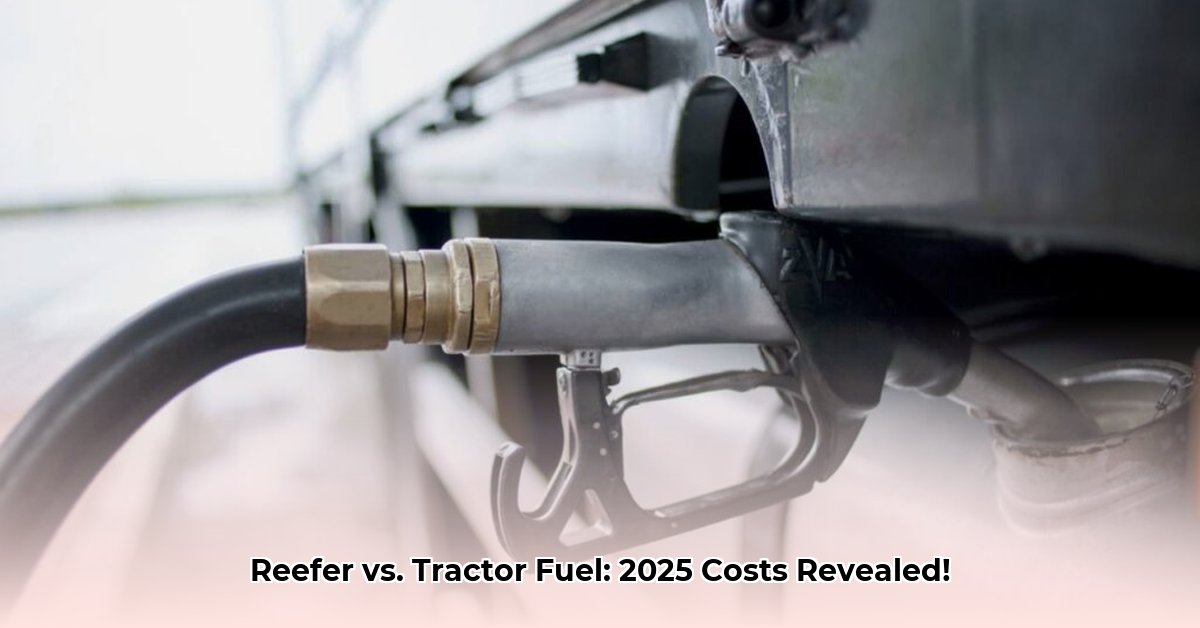
Choosing the right fuel significantly impacts trucking profitability. This guide clarifies the differences between reefer and tractor fuel, helping you make informed decisions in 2025. For more detailed cost analysis, check out this helpful resource on tractor operating costs.
Understanding Reefer and Tractor Fuel
Both are diesel, but their applications and regulations differ. Tractor fuel (standard diesel) powers the truck's engine and is subject to road taxes. Reefer fuel (dyed red off-road diesel) powers refrigeration units and is tax-exempt. However, using dyed reefer fuel on public roads is illegal and carries substantial fines.
The Price Differential: Potential Savings and Risks
While reefer fuel is typically cheaper, actual savings are complex. Factors influencing the cost difference include:
- Annual fuel usage: Your total diesel consumption.
- Local diesel taxes: Tax rates vary widely by location.
- Price gap between fuels: This fluctuates with market conditions.
- Enforcement risk: Stricter enforcement increases the risk of fines.
A simple calculation is insufficient. Thorough research based on your specific operation is necessary.
Navigating Legal Compliance: Reefer Fuel Regulations
Reefer fuel regulations are location-specific and complex. The definition of "off-road use" varies, and even minor issues (like faded dye) can lead to penalties. Consider this scenario: a driver accidentally mixes reefer and tractor fuel. The resulting fines could severely impact your finances and reputation. Detailed record-keeping is crucial.
Minimizing Risk: A Practical Strategy
To ensure compliance and avoid costly mistakes:
- Implement Strict Fuel Management: Clearly label fuel tanks, and train drivers and mechanics on proper procedures.
- Comprehensive Employee Training: Regular training sessions reinforce safe practices and current regulations. Refresher courses are essential.
- Regular Audits: Routine audits aid early problem detection. Consider fuel cards for tracking and misuse prevention.
- Technology-Driven Solutions: Fuel tracking technologies and GPS monitoring systems enhance monitoring and data collection for audits.
- Stay Updated: Regulations change, so stay informed via relevant agencies and industry publications.
Reefer Fuel vs. Tractor Fuel: A Direct Comparison
| Feature | Tractor Fuel | Reefer Fuel |
|---|---|---|
| Type | #2 Diesel (standard diesel fuel) | Dyed Red Off-Road Diesel |
| Taxation | Subject to road taxes | Exempt from road taxes |
| On-Road Use | Legal | Illegal (significant fines) |
| Cost | Generally Higher | Generally Lower |
| Environmental Impact | Higher greenhouse gas emissions | Potentially lower greenhouse gas emissions, further research needed for definitive conclusion |
The Future of Fuel: Emerging Trends
The industry is shifting towards alternative fuels (biodiesel, renewable diesel), offering potential environmental benefits and influencing future fuel costs. Staying informed about these developments allows for agile adaptation of your strategies.
Making the Right Choice: A Balanced Approach
The choice involves weighing potential cost savings against legal risks. Understanding regulations, implementing risk mitigation, and keeping abreast of industry advancements are key to a successful fuel strategy. Careful planning and execution are essential.
How to Minimize Reefer Fuel Misuse Penalties and Maximize Cost Savings
Key Takeaways:
- Understanding the differences between reefer and tractor fuel is critical for avoiding penalties.
- Preventative maintenance reduces fuel consumption and extends reefer unit lifespan.
- Driver training on fuel-efficient driving improves immediate cost savings.
- Advanced telematics offer long-term cost savings through real-time monitoring.
- Exploring alternative fuels and improved insulation contribute to long-term sustainability and cost reduction.
Operational Efficiency: Small Changes, Big Impact
Small operational changes yield significant fuel savings. Reducing idling time, driver training on best practices (smooth acceleration/braking), and optimizing reefer unit settings (cycle-sentry mode) all reduce fuel consumption. Maintaining your reefer unit's efficiency – regular cleaning and refrigerant checks – is vital.
Technology's Role in Fuel Optimization
Advanced telematics and GPS systems provide insights into fuel usage patterns, allowing for immediate identification of inefficiencies. These systems can pinpoint areas for improvement, leading to cost reductions.
Long-Term Sustainability and Savings
Exploring alternative fuels (electric/hybrid reefers) and investing in improved trailer insulation offer long-term sustainability and cost reduction. However, these often involve higher upfront costs, requiring thorough cost-benefit analyses.
Implementing a Fuel-Saving Strategy: A Step-by-Step Guide
- Assess current fuel consumption: Analyze your fleet's fuel usage to identify areas for improvement.
- Implement driver training: Educate drivers on fuel-efficient driving and proper fueling procedures.
- Optimize reefer unit settings: Utilize cycle-sentry mode where applicable.
- Establish clear fueling protocols: Implement strict procedures to prevent incorrect fuel use.
- Engage in preventative maintenance: Regularly service reefer units and engines.
- Explore technological upgrades: Investigate the potential of telematics systems.
- Consider alternative fuels: Conduct a cost-benefit analysis for long-term sustainability.
A holistic approach to fuel management is vital for long-term success. Continuous monitoring, adjustment, and adaptation are key to minimizing penalties and maximizing savings.